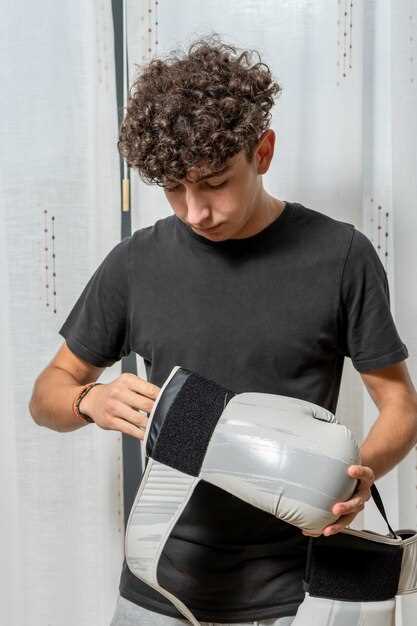
For many car enthusiasts, the process of debadging is a crucial step toward achieving a cleaner, more streamlined appearance for their vehicle. In the case of the VW Corrado, a beloved classic, trim removal can significantly enhance its aesthetic, giving it a more modern and minimalist look. This guide will walk you through the steps necessary to debadge your Corrado without damaging the paint or trim.
Removing badges may seem like a simple task, but it’s important to approach it with caution and precision. Proper trim removal techniques ensure that the vehicle’s finish remains intact, avoiding costly paint repairs. By following the right procedures, you can achieve a professional finish that elevates the overall appearance of your VW Corrado.
In this guide, we will cover the essential tools required for debadging, the recommended methods for effective removal, and tips to clean up any residue left behind. With the right approach, you can transform your Corrado while preserving its value and charm.
Choosing the Right Tools for Debadging

When it comes to debadging your VW Corrado, selecting the right tools is essential for achieving a clean removal without damaging the paintwork. Start with a quality adhesive remover; this will help dissolve the glue that holds the badges in place and make the removal process smoother.
Additionally, a plastic trim removal tool is highly recommended. This tool will prevent scratches on your car’s surface while prying off the badges. Metal tools can easily damage the paint, so avoiding them is crucial for a successful debadging.
You will also need a heat source, such as a hairdryer or a heat gun. Applying gentle heat to the badge will soften the adhesive, making it easier to remove. Just be careful not to overheat the area, as this can lead to paint damage.
Lastly, microfiber cloths are invaluable for cleaning the area once the badges have been removed. They are soft and absorbent, perfect for wiping away any leftover adhesive or residue. Ensuring you have the right tools will make the debadging process efficient and help maintain the integrity of your vehicle’s exterior.
Step-by-Step Process for Safe Trim Removal
Debadging your VW Corrado involves careful removal of the trim without causing damage to the vehicle’s surface. Follow this step-by-step guide to ensure a clean and safe process.
- Gather Necessary Tools:
- Heat gun or hairdryer
- Plastic trim removal tools
- Adhesive remover
- Microfiber cloths
- Glass cleaner
- Protective gloves
- Prepare the Area:
Park your vehicle in a shaded area to prevent the adhesive from heating up too much. Clean the trim area with glass cleaner to remove dirt and debris.
- Heat the Trim:
Use a heat gun or hairdryer on low setting to warm the debadging area. Hold it about 6 inches away and move it in a circular motion to avoid overheating.
- Gently Pry Off the Trim:
Once heated, use the plastic trim removal tools to carefully pry up the edges of the trim. Start at one corner and slowly work your way around.
- Remove Adhesive Residue:
After removing the trim, you may find adhesive residue left behind. Apply adhesive remover onto a microfiber cloth and gently rub the area until clean.
- Final Clean-Up:
Once the adhesive is gone, clean the area once more with glass cleaner. This will restore shine and protect the paint underneath.
- Inspect for Damage:
After completing the debadging process, closely inspect the area for any paint damage or scratches. If necessary, consider applying a touch-up paint.
By carefully following these steps, you can achieve a successful debadging of your VW Corrado’s trim without harm to the vehicle’s finish.
Techniques for Removing Badges without Damage
When debadging your VW Corrado, it’s essential to utilize the right techniques to ensure that you remove badges without damaging the paint surface or bodywork. Follow these methods for effective removal:
First, start by warming the area around the badge with a heat gun or a hairdryer. This gentle heat softens the adhesive, making it easier to remove the badge without pulling at the paint. Maintain a distance of about 6–8 inches from the surface to avoid damaging the paint or finish.
Once the area is warmed, use a plastic trim removal tool or a flat plastic card to gently pry up the edge of the badge. Avoid using metal tools, as these can scratch the surface. Carefully work your way around the badge, applying even pressure to gradually lift it off. Patience is key; rushing may lead to paint damage.
After the badge is removed, there may be adhesive residue left on the surface. To eliminate this, use an adhesive remover designed for automotive finishes or isopropyl alcohol. Apply it to a soft microfiber cloth and gently rub the area until all residue is gone. This step is crucial in preparing the surface for any future detailing or repainting.
Finally, ensure you clean the area with car soap and water before applying any wax or sealant. This will help maintain the integrity of your vehicle’s finish post-debadging. Following these techniques will allow you to successfully remove badges without causing any damage to your VW Corrado.
Cleaning Surface After Debadging: Best Practices
After successfully debadging your VW Corrado, it’s essential to clean the surface meticulously to ensure no residues remain and the finish looks pristine. Here are the best practices to achieve a flawless result:
| Step | Description |
|---|---|
| 1. Gather Materials | Prepare isopropyl alcohol, a soft microfiber cloth, adhesive remover, and a detail brush. These tools will help remove any adhesive and clean the surface effectively. |
| 2. Apply Adhesive Remover | Soak a cloth with adhesive remover and gently apply it to the area where the badges were located. Allow it to sit for a few minutes to break down the adhesive. |
| 3. Wipe Off Residue | Use a clean microfiber cloth to wipe away the softened adhesive. Be gentle to avoid scratching the trim. |
| 4. Clean with Isopropyl Alcohol | Dampen another cloth with isopropyl alcohol and wipe the surface to remove any remaining residue from the adhesive remover and to prepare the area for polishing. |
| 5. Inspect the Surface | Check the area for any remaining adhesive or imperfections. If necessary, repeat the previous steps until the surface is completely clean. |
| 6. Detailed Finish | Once cleaned, use a detail brush to carefully remove any grime from crevices and around the trim, ensuring no residue is trapped. |
| 7. Final Polish | To restore shine, consider applying a suitable polish or wax to the debadged surface. This step enhances appearance and adds a protective layer. |
By following these best practices, you can ensure that the surface after debadging is not only clean but also maintains the integrity of the vehicle’s appearance. Take your time with each step for the best results.
Optional Touch-Up Paint for Exposed Areas

When debadging your VW Corrado, the removal of badges can sometimes leave exposed areas in the car’s finish. To ensure a seamless look, applying touch-up paint is highly recommended. This step is crucial for maintaining the aesthetic integrity of your vehicle.
After the removal of badges, inspect the areas for any paint damage or inconsistencies in color. It’s important to choose a touch-up paint that matches your vehicle’s original trim color. Many manufacturers offer small bottles of paint specifically designed for this purpose, allowing for a precise match.
Before applying the touch-up paint, make sure to clean the exposed areas thoroughly. Use a gentle car wash solution to remove dirt and residues. Once dry, apply the touch-up paint carefully, using a fine brush or applicator to ensure precision. Make sure to feather the edges to blend seamlessly with the surrounding paint.
Allow the touch-up paint to cure as per the manufacturer’s instructions. This will help ensure durability and a smooth finish. Taking these steps will keep your VW Corrado looking polished and free from unsightly spots where badges once were.
Maintaining Your VW Corrado Post-Debadging
After the removal of badges from your VW Corrado, it is essential to focus on maintaining the vehicle’s appearance and trim. First, inspect the areas where the badges were located for any remaining adhesive residue. Clean these surfaces thoroughly using a gentle adhesive remover or rubbing alcohol to prevent any damage to the paint.
Next, consider applying a paint sealant or wax to the cleaned surfaces. This will protect the exposed paint from environmental elements and maintain the overall aesthetic of your Corrado. Ensure that the sealant or wax covers not only the debadged areas but also the surrounding trim for a uniform appearance.
Additionally, pay attention to the trim around the badges. Often, trim pieces can become faded or scratched during the debadging process. Using a plastic restorer can help revitalize these sections, keeping them looking new and enhancing the vehicle’s overall look.
Regular washing and waxing of your Corrado are crucial in the long run. By maintaining a consistent cleaning routine, you will preserve the integrity of the paintwork and trim, ensuring that your vehicle remains in optimal condition even after debadging.
Lastly, keep an eye on the overall condition of the vehicle. Regularly check for any signs of wear and tear that may arise after the removal process, and address any issues promptly to maintain the beauty and performance of your VW Corrado.











